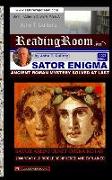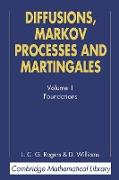Sator Enigma: Ancient Roman Mystery Solved At Last: 2000 Year Old Riddle Deciphered and Explained
BücherAngebote / Angebote:
In an age of thrillers and mystic secrets, here is a true-life Da Vinci Code: the Sator Enigma, from ancient Rome. Is it Christian? Is it Pagan? What did it mean to the Romans? Should it mean anything to us in modern times?For centuries, scholars have been baffled by a mysterious inscription found in ruins across the Roman Empire: at a military headquarters in Syria, a sport complex in Pompeii, two British colonial towns... it must have been a saying or a spell of extraordinary importance in the Roman world.NOTE: updates & Info at satorarepotenet.com.At last, the mystery is solved--and the solution is more meaningful (even today) than anyone imagined. History researcher and writer John T. Cullen has discovered the only plausible translation and explanation of the ancient Sator Arepo inscription, after scholars have spent centuries trying to unravel the ancient code. And yes, it is just as meaningful to all moderns as it was in the ancient world. In fact, while it was never a Christian artifact during Roman imperial times, it became the underpinning of Christian theology in the doctrine of free will and individual responsibility to choose right or wrong.After the disintegration of the Western Roman empire, the Sator Square's meaning was lost to history (until now), but its powerful, pragmatic message became as fundamental to Christian theology as Classical neo-Platonism, even though the Sator Square was a Pagan artifact of Roman agrarian origin.The inscription is remarkably the same everywhere we turn in Roman ruins from Asia to Europe: Sator Arepo Tenet Opera Rotas. Because it is a perfect, four-way palindrome, it is often also called a Rotas Square (Rotas Opera Tenet Arepo Sator). Its meaning, commonly understood across the ancient Roman nation of more than fifty million souls stretching from the British Isles to the Indian Ocean, from nearly the Arctic Circle to nearly the Equator, is now understandable again after fifteen centuries of superstition and incomprehension.It is the most perfect four-way palindrome ever devised. It is arrayed in a repetitive five-by-five square that reads the same left-right, right-left, up-down, down-up. It works because of the linguistic properties of Latin, an almost perfectly inflected language, which is perfect for creating world-class puzzles.What does the Sator Enigma mean? Famous composers (Anton Webern), Classics scholars (C. W. Ceram, Jerome Carcopino, and many others), and mystics have turned their attention to it--sometimes desperately, always in cosmic awe--but the meaning has utterly eluded them. One man did his Ph.D. thesis in Classics at Yale University years ago, on this very subject, without managing to crack the Sator Code.The most common translation ("The sower Arepo holds the wheels with effort") can be dismissed as utter nonsense. The correct answer has been hidden in plain sight for two thousand years, all across the Roman Empire and until now, obscured under layers of superstition and magic.During an intensive study of ancient Roman topology, unrelated to the Sator Square, the author happened upon this ancient inscription (of which he had been aware for many years, without ever thinking he could solve it). During the summer of 2007, with research sources on ancient Roman topology coincidentally spread all around him at his desk one night, John T. Cullen came across the Sator Square and idly toyed with it. Within moments, he spotted what turned out to be the key--something nobody else has ever noticed. From there, it was only a matter of two weeks until he had a meaningful translation. From that, quite logically, a world of many layers and astounding implications unfolded as the Sator Enigma opened up and revealed its secrets.
Folgt in ca. 15 Arbeitstagen




